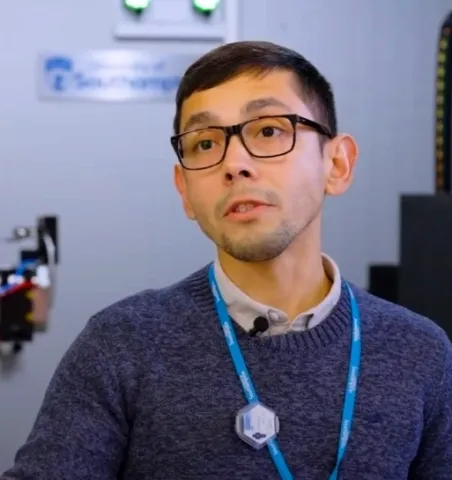About the project
Seafloor sediment characterisation is fundamental for assessing geohazards to planning and monitoring offshore renewables sites. They are generally inaccessible and expensive to characterise. This project is aimed to link key geotechnical and geophysical characteristics of sediments to enhance the use of remote geophysics with little need for ground truthing.
Our current and future energy security depends on the resilience of offshore infrastructure, such as wind farms, oil and gas platforms and pipelines, while the integrity of submarine cables is paramount to the connectedness of our increasingly digital world. To reliably design offshore infrastructure, monitor and assess the risks posed by geohazards such as submarine landslides, our ability to determine the geomechanical properties of shallow (i.e. less than 150m depth) sub-seafloor marine sediments is of key importance. Using geophysical data to decipher the type of sediment and its physical properties requires knowledge of wave velocities of typical sediments and their relationship to fundamental geotechnical parameters (i.e. density, porosity, particle size distribution, heterogeneity, anisotropy, and sensitivity - due to particle arrangement and/ bonding between them). Remote geophysical measurements can be obtained over large areas rapidly, inexpensively and thus are repeatable in contrast to intrusive methods (e.g., in-situ coring) which in many instances are not representative of the insitu sediment profile. If geophysical data can be related to physical properties, this would be a cost-effective approach to provide valuable information for offshore research.
This project aims to develop a geoacoustic framework/tool, that integrates geophysical properties and geotechnics of shallow sub-seafloor sediments, to address following questions:
- Can we use remote geophysics to better characterise sea-floor sediments for offshore UK windfarm?
- Can integration of geophysical and geotechnical characterisation improve offshore geohazard detection?
- Does geoacoustic characterisation help in improving our understanding of near surface soft sediments?
Supervisory team
The supervisory team includes supervisors from several organisations, including our INSPIRE Partners. Please contact the Lead Supervisor for more information about the team.
Training
The INSPIRE DTP programme provides comprehensive personal and professional development training alongside extensive opportunities for students to expand their multi-disciplinary outlook through interactions with a wide network of academic, research and industrial/policy partners. The student will be registered at the University of Southampton and hosted at the National Infrastructure Laboratory and National Oceanography Centre. Specific training will include:
- Advanced characterisation of seabed sediments and development of specialist geophysical and geotechnical expertise in world-class geomechanics and sediment analysis facilities hosted by the National Infrastructure Laboratory (Murthy)
- Sediment characterisation using Multi-Sensor Core Logging facility and Scanning Electron Microscopy at BOSCORF, NOCS
- Remote geophysics data analysis at National Oceanography Centre Southampton (Mangriotis)
- Advanced high-resolution X-ray computed tomography imaging using both laboratory-based systems and particle accelerator (synchrotron) driven X-ray sources
- State-of-the-art image processing techniques including the deployment of deep learning-driven solutions for image analysis at the prestigious µ-VIS X-ray Imaging Centre (Alvarez-Borges)
- Characterisation of suspension to soft sediments using state-of-the-art rheometer techniques in the Multiphase and Non-Newtonian Fluids Lab (Peters)

